How to Use Eggshells for Plants + Garden
Can you compost eggshells or put eggshells in your compost bin? Are composted eggshells good for your soil and garden? Can I get salmonella by putting eggshells into my compost and garden? Composted eggshells can be a rich source of nutrients that plants need. Here’s how to use eggshells for plants.
It always makes for a funny moment when a guest at my home needs to open my bottom oven and is greeted by a big bowl of eggshells. I am invariably asked, “Uh, why are there eggshells in your oven?” Then I have to try to give them the abbreviated version of my composting and organic gardening trials, tribulations, and adventures. At the end of the discussion, I usually get an “Oh…” (which in their mind is followed by ‘That’s way more than I really needed to know‘ or ‘Wow, she’s way crunchier than I realized‘).
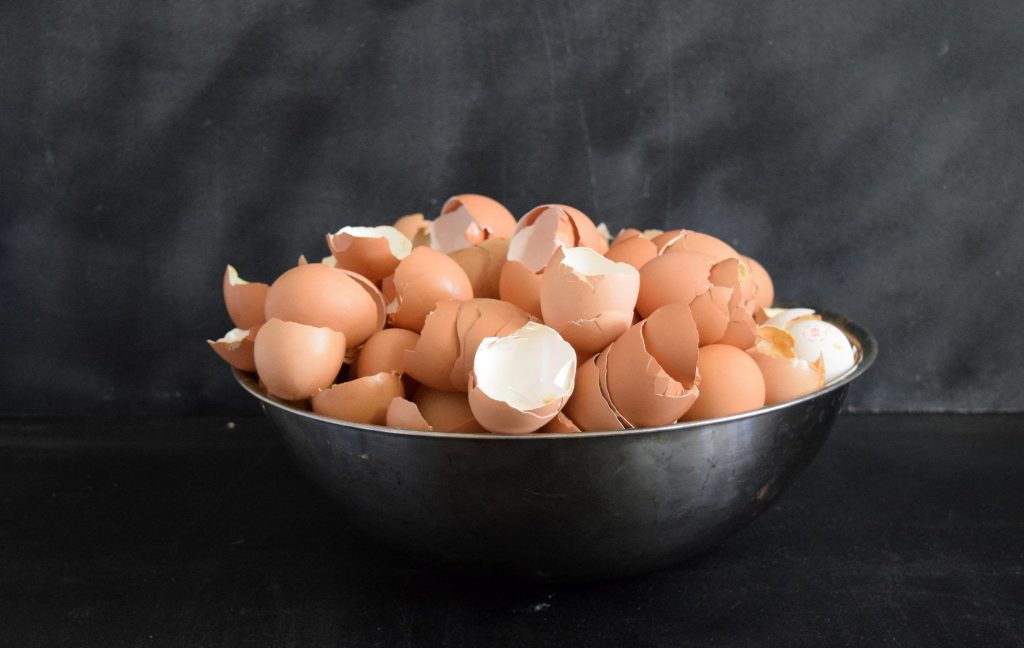
Table of Contents
We have been avid composters for many years and used to throw our eggshells into the compost heap with the rest of our compostables. But, as we used the compost, we began to see that the eggshells remained relatively intact, thereby not contributing as much to my garden as they might.
So, I started doing a little research and realized that I could make the benefits of eggshells more readily available in our garden with just a little work. Before we dive into that, let’s look at why you would want to save and use eggshells for the plants in your garden.
Why You’ll Want To Use Eggshells For Plants
While eggshells have many benefits as fertilizer for plants and your garden, it is always a good idea to get your soil tested so that you know what you are dealing with before you begin adding to it. Most extension services provide soil testing for free or at minimum expense.
As a Fertilizer
The primary nutrient in eggshells is calcium carbonate, which makes up about 94-97% of the shell’s composition. Calcium Carbonate is the same brittle white stuff that chalk, limestone, cave stalactites, sea shells, coral, and pearls are made of.
Calcium is a crucial nutrient for plants as it aids in building strong cell walls, promoting healthy growth. When calcium levels in the soil are low, plants may exhibit signs of calcium deficiency, such as stunted growth or deformed fruits and vegetables. Adding crushed eggshells to your soil can provide a slow-release source of calcium that plants can absorb over time. A common symptom of calcium deficiency is blossom end rot in tomatoes, peppers, melons, and eggplants.
In addition to calcium, eggshells contain trace amounts of other beneficial plant minerals. These include magnesium, phosphorus, and potassium. While these nutrients are present in smaller quantities, they play vital roles in plant health. For instance, magnesium is a key component of chlorophyll, the pigment that gives plants their green color and aids in photosynthesis. Phosphorus is essential for energy transfer and storage in plants, while potassium helps regulate water and nutrient movement in plant cells.
While not a mineral, eggshells also contain small amounts of protein from the membrane on the inside. When eggshells decompose in the soil, these proteins break down into amino acids, which plants can utilize. Amino acids are the building blocks of proteins in plants and are essential for various physiological functions, including growth and development.
pH Balancing
Eggshells, due to their calcium carbonate content, can also help balance the pH of your soil. They are alkaline in nature, so they can be used to raise the pH of acidic soils. This can be particularly beneficial for plants that prefer a more neutral to slightly alkaline soil pH. In fact, eggshells have the same effect of reducing soil acidity as commercial lime.
That being said, avoid adding eggshells to the soil of acid-loving plants, such as blueberries, cranberries, azaleas, camellias, hydrangeas, etc…
As a Pest Deterrent
Crushed eggshells in your compost on the surface of your soil act similarly to diatomaceous earth in your garden. Diatomaceous earth is a natural product made of ground-up fossilized water plants. When sprinkled on the soil, it will lacerate the bodies of destructive slugs and similar pests, such as cutworms, stopping them in their tracks before chomping on your plants.
If using eggshells as a pest deterrent, keep the shells no smaller than 1/4″ and layer them about 1/4″ thick around the base of your plants.
Improve Soil Structure
Finely ground eggshells can improve the aeration and drainage of soil by creating air pockets.
Birds Benefit From Ground Eggshells, Too!
The primary benefit of ground eggshells for birds is as a source of calcium. Calcium is a crucial nutrient for birds, especially for females during breeding. The shells of the eggs they lay are almost entirely made of calcium carbonate. If a female bird’s diet lacks sufficient calcium, she might not be able to produce strong eggshells, which can lead to eggs that are susceptible to breakage or even health problems for the bird itself. By eating ground eggshells, birds can replenish their calcium stores.
Additionally, birds do not have teeth to chew their food. Instead, they have a specialized part of their stomach called the gizzard, which grinds food before it’s digested. Birds often eat small stones, sand, or other gritty substances to aid this process. Ground eggshells can serve as this grit, helping birds to break down and digest their food more effectively.
To safely provide ground eggshells for birds, it’s important to sterilize the shells first to kill any potential bacteria. This can be done by baking the shells at a low temperature for about 20 minutes. After they cool, the eggshells can be crushed finely and then placed in a feeder or scattered on the ground.
Earthworms ❤ Eggshells and Gardens ❤ Earthworms
The calcium in eggshells aids reproduction and helps earthworms to grow and develop. When you add ground eggshells to your soil or compost, the earthworms can ingest the eggshell particles and absorb the calcium.
Further, earthworms prefer a neutral to slightly acidic pH; if the soil or compost becomes too acidic, it can harm them. The calcium carbonate in eggshells can help neutralize acidic conditions and create a more favorable environment for earthworms.
Like birds, earthworms also need grit to aid in digestion. The gizzard, a part of the earthworm’s digestive system, uses grit to grind organic matter. Ground eggshells can provide this necessary grit.
Environmental and Economic Benefits
Instead of throwing shells in the trash to fill our landfills, your wallet and the environment will benefit from using them for your garden. Instead of buying lime to lower acidity in your soil, use eggshells. Don’t buy calcium for your garden; use eggshells!
So, have I convinced you that you want to save eggshells for your plants and garden? Good! Now, let’s talk about how to use eggshells in the garden.
How to Use Eggshells For Plants and In The Garden
First Things First
We need to sterilize and break the eggshells down so that they will decompose quickly.
I collect the eggshells in a big metal bowl that I keep in my oven. When I turn the oven on, I remove the bowl to preheat it, but add it back when it is still warm. Just a fair warning: baking and burnt eggshells smell really bad! So, the trick is to keep the bowl in a WARM oven.
When you have a bowl full of eggshells, you can easily crush them into small pieces using a food processor, coffee grinder, or a blender. However, if you use a plastic container, be aware that the eggshells can scratch it. Alternatively, you can spread the eggshells on a flat surface and use a heavy rolling pin to crush them. For best results, it’s important to grind the eggshells into small pieces, similar in size to grains of sand.
Once you have this eggshell sand, you can use it in a couple of ways:
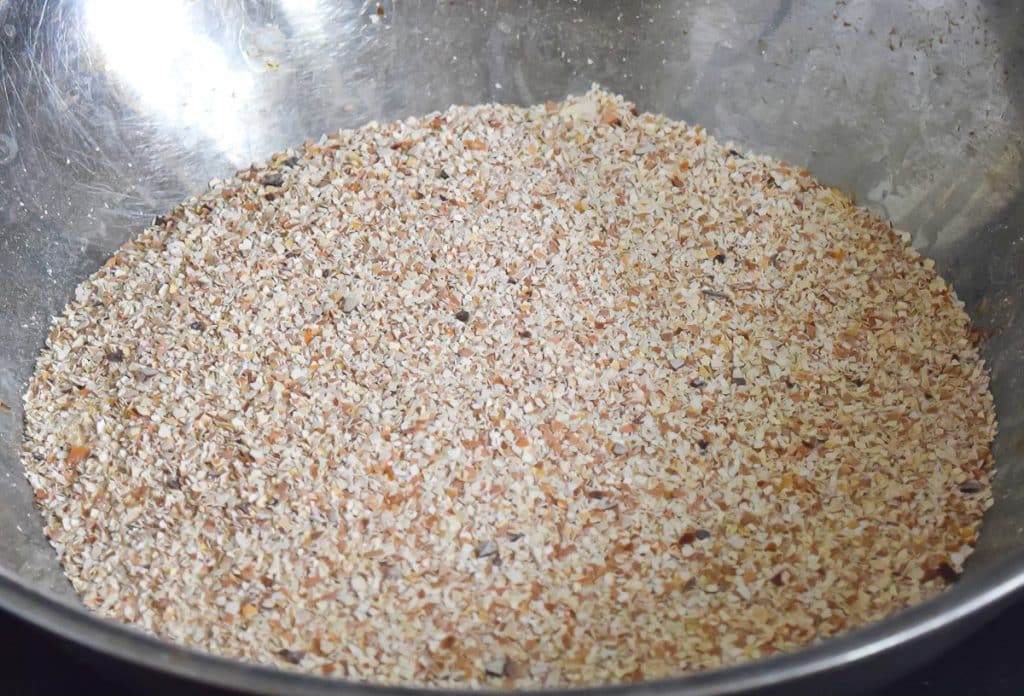
Add It To Your Compost Pile
Not only do eggshells add calcium, but they also help balance the pH in your compost bin. Many typical compostables are acidic (coffee grounds, fruit waste, pine needles, and oak leaves), and eggshells help balance that acidity.
Additionally, eggshells improve the physical structure of the compost. They can add bulk and improve aeration within the compost pile, which can help speed up the composting process.
Work It Into Your Soil
You can mix finely ground eggshells into the soil, but know that it will be at least 6 months until those fine grounds release calcium. Mixing the eggshell crumbs in the fall will benefit the plants in the spring. If you get in the habit of adding eggshells 2-4 times a year, your plants will benefit year-round.
Make Water-Soluble Calcium Liquid Fertilizer
Mixing 2 tablespoons of finely ground eggshells with 2 tablespoons of white vinegar will dissolve the calcium carbonate shells, resulting in water-soluble calcium acetate. This process can take 12-24 hours.
You can strain the remaining eggshells and mix the water-soluble calcium with 1 gallon of water to create a calcium fertilizer that can be used both as a foliar and systemic fertilizer.
Sprinkle It Around Your Bird Feeder
It bears repeating that you should sterilize the shells first to kill any potential bacteria. This can be done by baking the shells at a low temperature for about 20 minutes. After they cool, the eggshells can be crushed finely, placed in a feeder, or scattered on the ground.
And Another Friendly Reminder…
It’s always a good idea to test your soil to ensure you don’t get one of the elements out of whack. Most extension agencies offer this service for free.
Frequently Asked Questions
Eggshell amendments benefit plants that require high calcium levels, like tomatoes, peppers, and eggplants. Calcium helps prevent blossom end rot in tomatoes and peppers, a common problem caused by calcium deficiency.
While eggshells are beneficial, excessive use can lead to an imbalance in soil nutrients. High calcium levels can inhibit the uptake of other essential nutrients like magnesium and potassium. It’s important to use eggshells in moderation and consider conducting a soil test to understand the specific needs of your garden soil.
Eggshells decompose slowly, which means they release calcium gradually over time. It can take several months to years for eggshells to fully break down, depending on factors like the particle size of the crushed shells and soil acidity.
What are some organic/natural soil amendments you have found to be useful?
Bookmark this page or pin the following image to return to this article on How to Use Eggshells for Plants and in the Garden in the future.
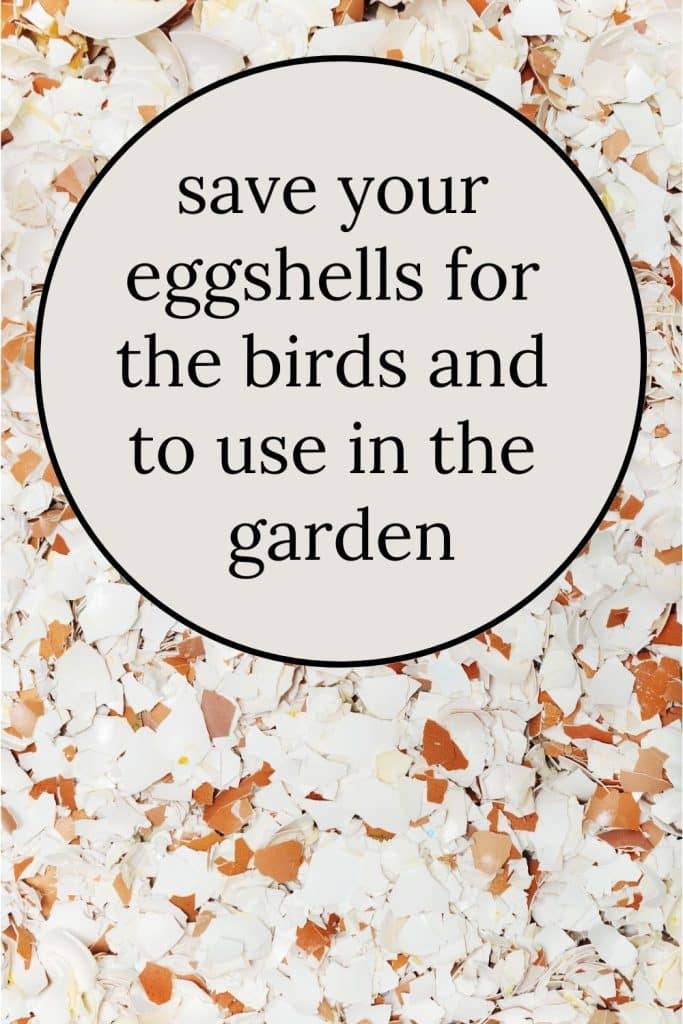
Thanks so much for spending a few minutes of your busy day with me!
To ensure you don’t miss future content, pop your email in the pale green box on the right or click here. I usually send one email weekly, so I won’t inundate your inbox. I’m sensitive to an overflowing email inbox!
We will only use your email address to send you emails, no more than 1-2 weekly. In addition, you will have access to my growing library of knit & crochet patterns and other printables. Check back often as this library will continue to grow. You can unsubscribe anytime by emailing me or clicking on the “unsubscribe” link at the bottom of all emails.
And you can access many of the products I refer to on my Nourish and Nestle Amazon Page. You can access it here.
So, if you’d like to participate in the ‘subscriber benefit’ action, simply subscribe to Nourish and Nestle here or use the form on the right sidebar. It’s slightly towards the top.
I have sent all my subscribers the link to the Subscriber Benefits Library. If you missed it or misplaced it, let me know.
Until next time…


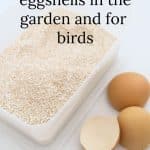

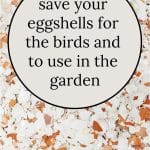
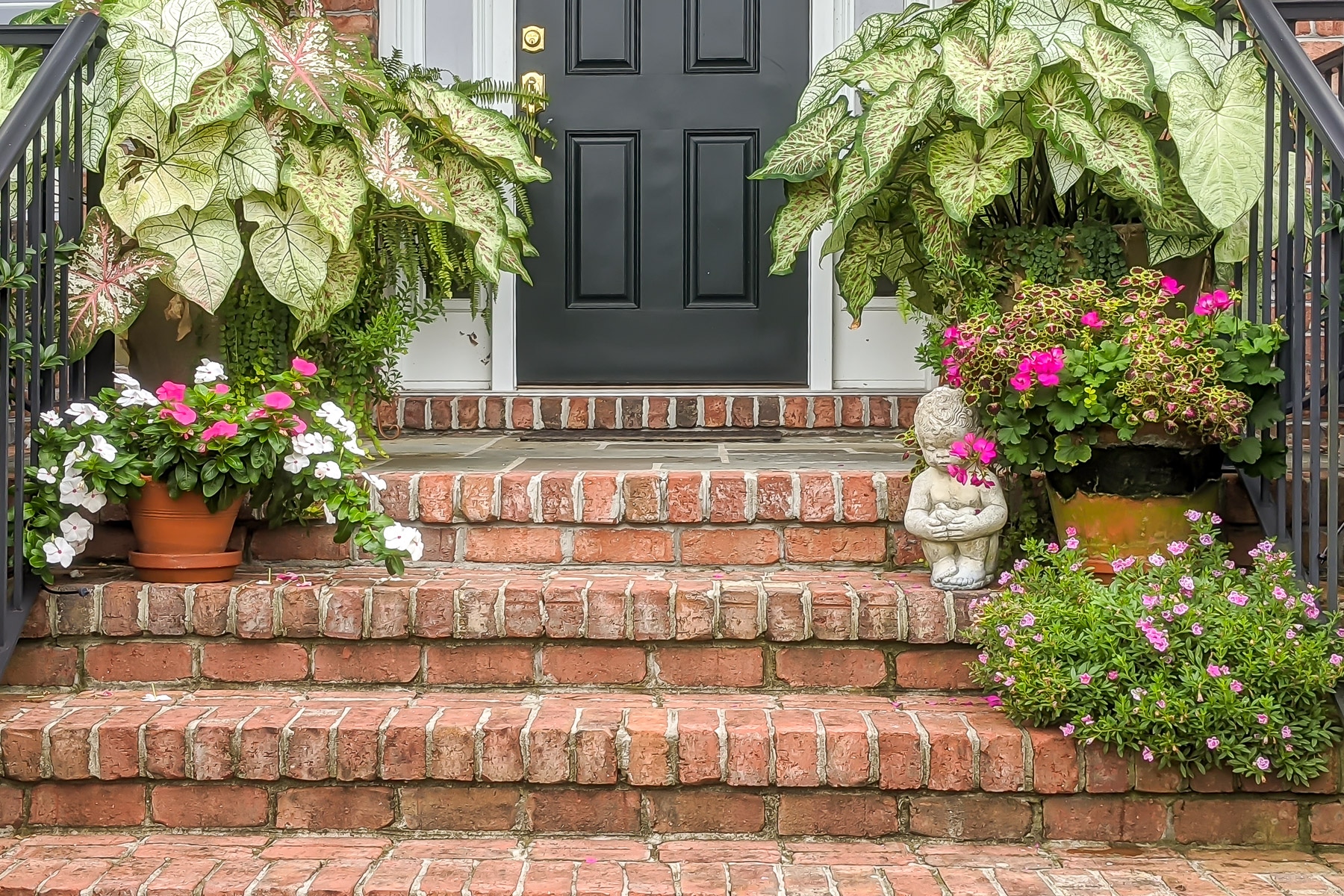
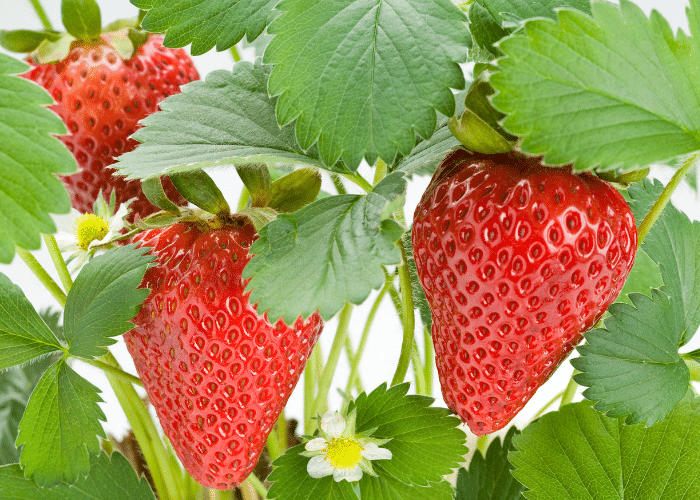
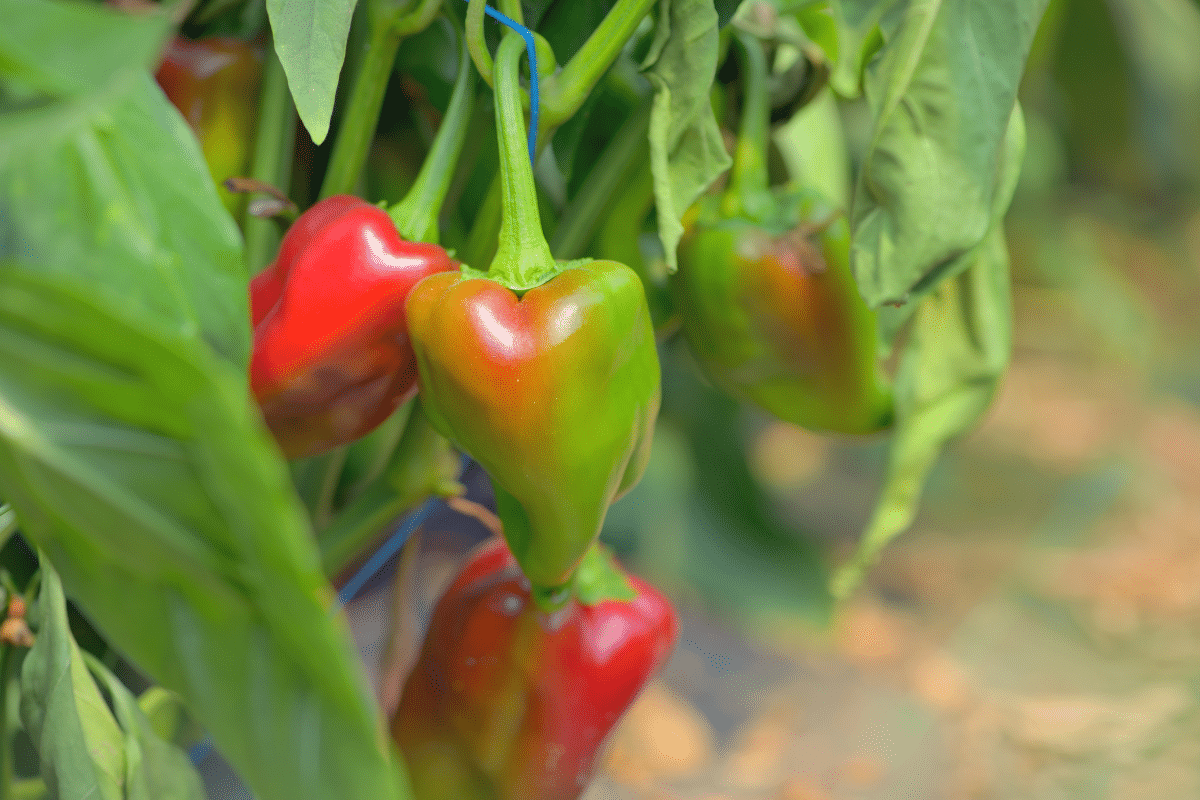
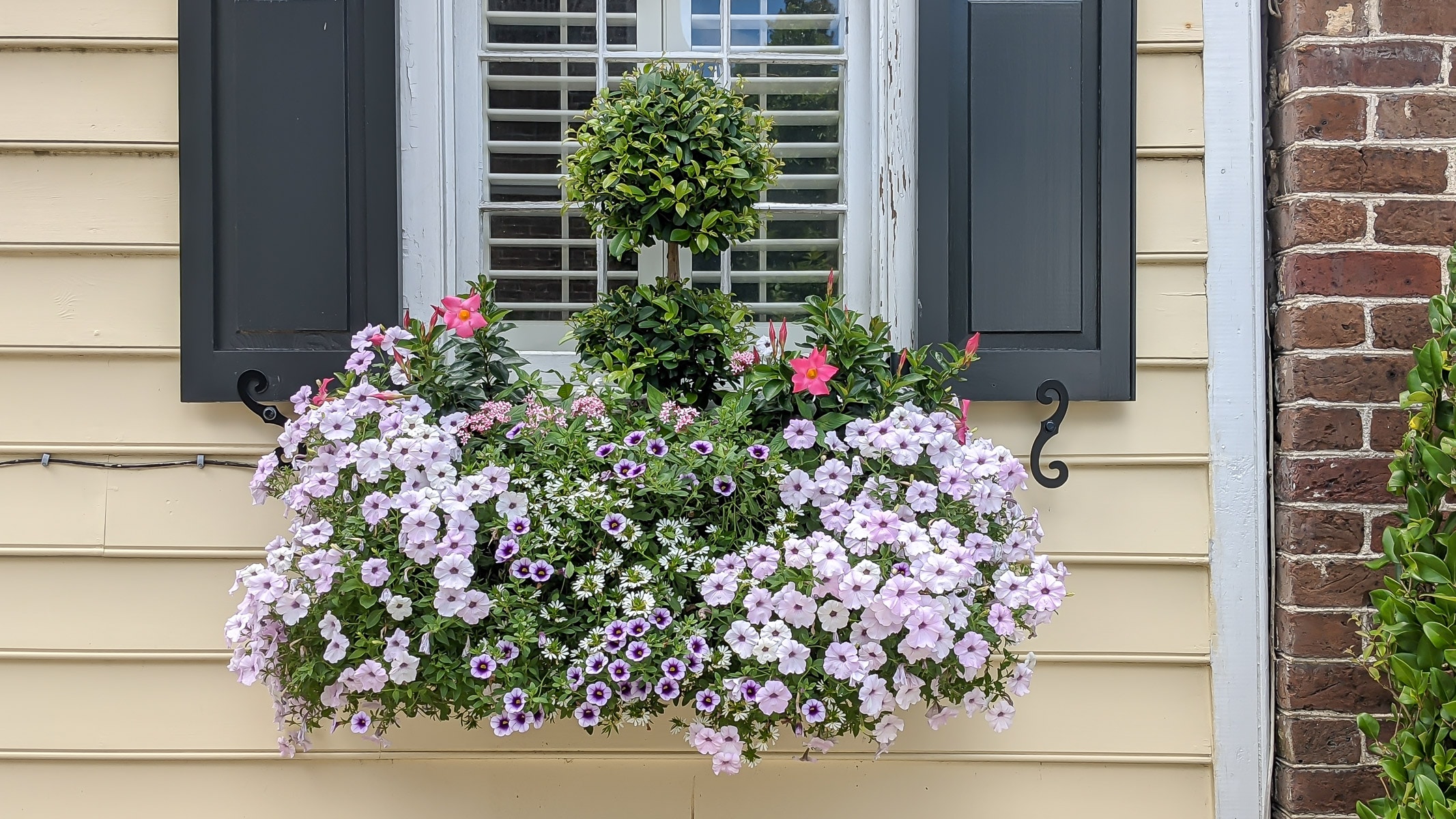


You can also use eggshells as a deterrent to cabbage moths in your garden. An old wives tale that I’ve tried with success
Gail, do you just sprinkle them around the cabbages? I’m not familiar with that use, but will surely employ it in my battle against destructive critters. Thanks for sharing.
Hi, I do believe this is an exxellent blog. I stumbledupon it 😉 I will return once again since I saved as a favorite it.
Money and freedom is the best way to change, may you be rich and continue to help others.
I realized as I dished out my compost that eggshells staying intact was certainly true so they went into my kitchen compost crushed in my hands which I’ve done for years much to the horror of visiting children. I will try your method next.
Hi Astrid, I did the same thing for the longest time. Then I remembered my food processor! Bingo!
Happy Composting!
Hugs, Lynn
Hi Lynn,
May I also suggest Operation Gratitude? They make gift boxes for active duty service people, and have different ways to help. I knit scarves & hats. Be care, however, the size of items is very specific. They know how much they can get in a gift box!
Thanks, as always for your time & dedication to those of us who need your help!
Norene
Thanks Norene,
We have given Operation Gratitude boxes in the past, as well. It is a great organization.
Hi Lynne,
This is such a coincidence to see this information on your blog today.
My cat has recently developed a kidney disorder and requires extra calcium. She refused to eat her food with the Rx supplement and was losing weight. Nothing would induce her to eat.
The vet this week recommended I grind eggshells to a very fine powder/flour-like and mix with water into a slurry.
Blend the slurry into her food.
Bingo. Cat is eating and eggshells are proliferating in my kitchen. Most of all I’m thrilled. Cat now eating & doing well. And I’m saving the $40 for the jar of supplement.
Oh my heavens! That’s fantastic and I’m so happy for kitty. I know that many dog owners use eggshells for their dogs and I love that your vet thinks outside of the box for holistic remedies! As always, your comments make such a contribution to our community.
Thanks, Rita!